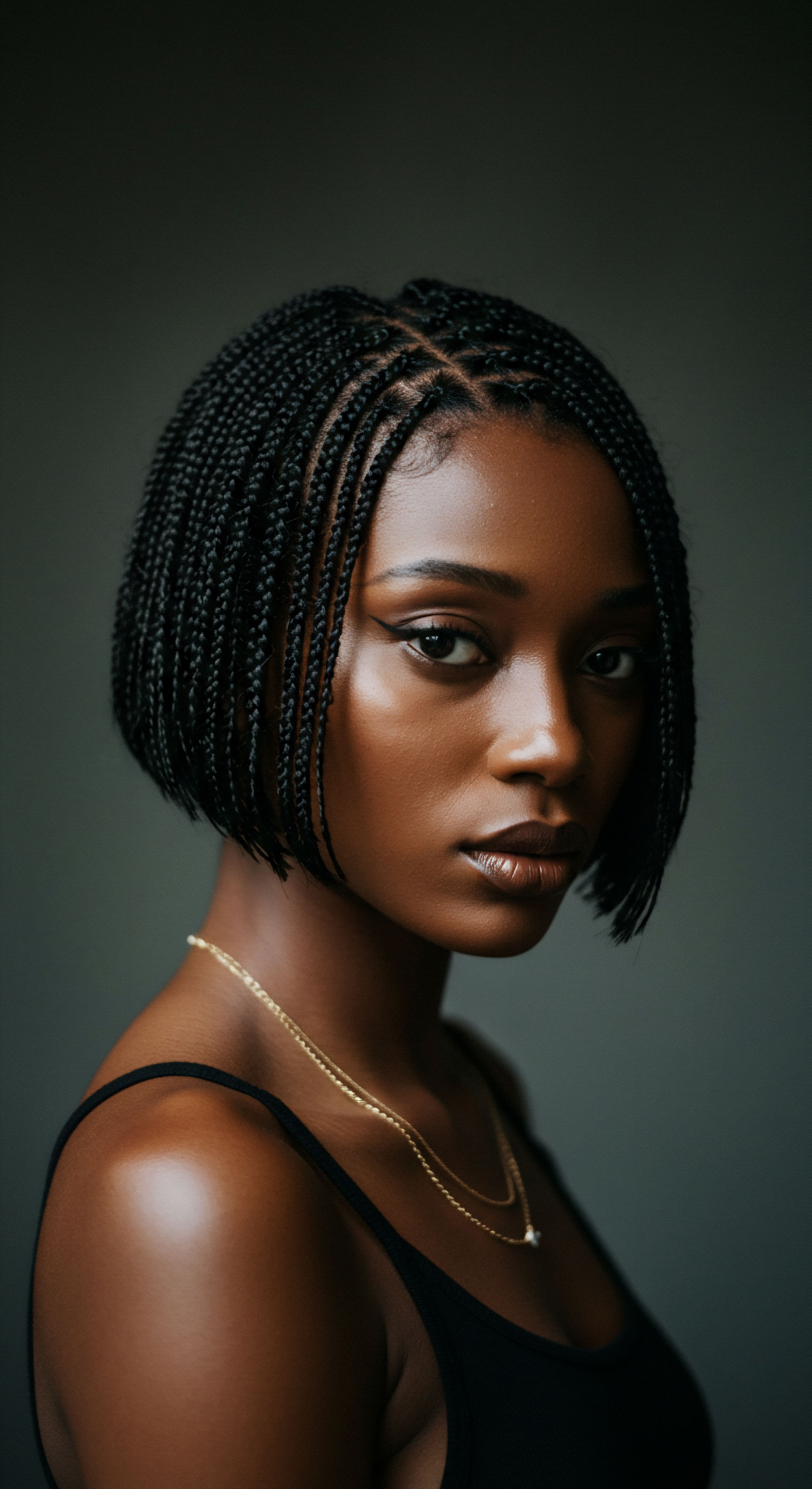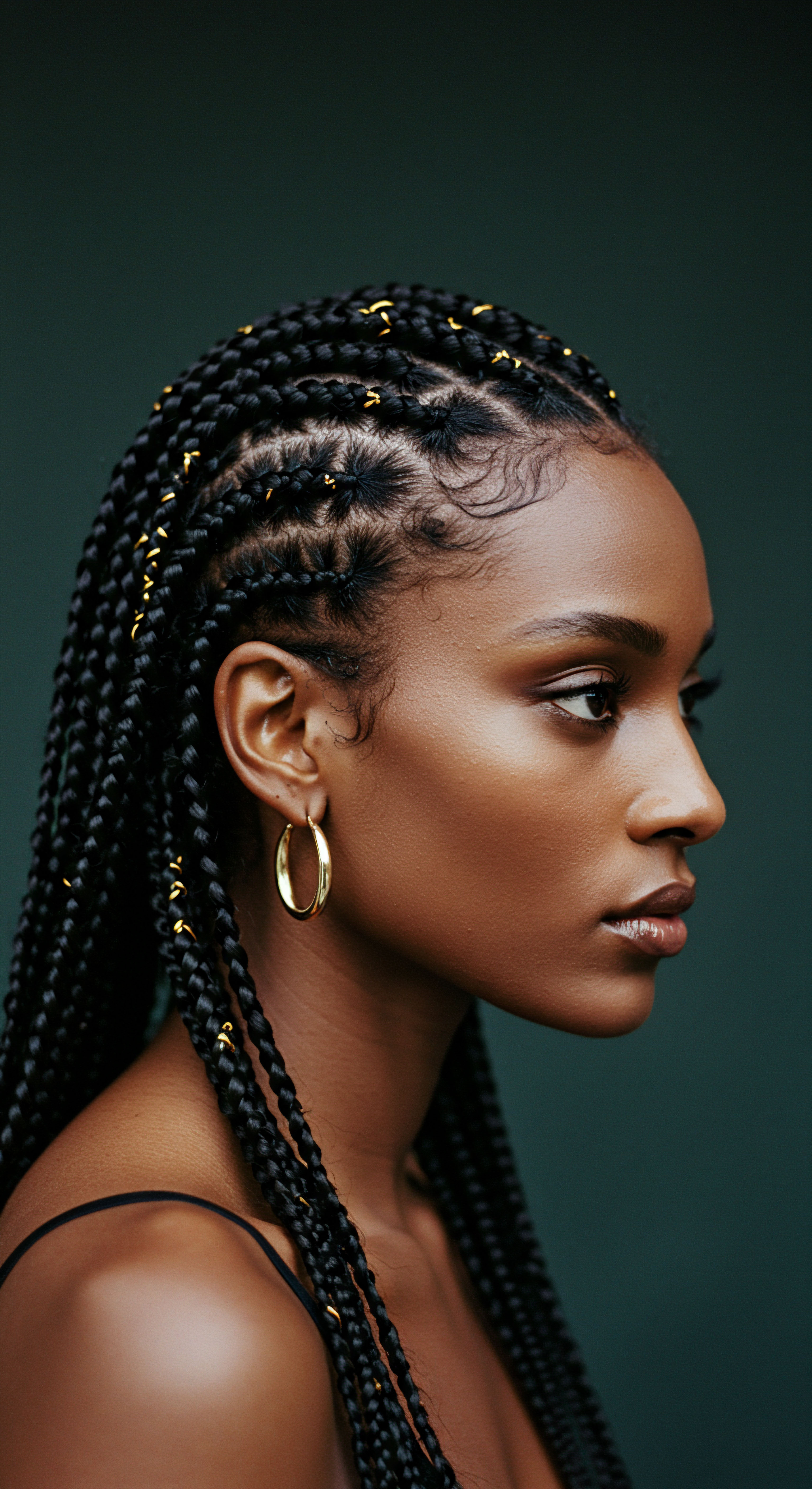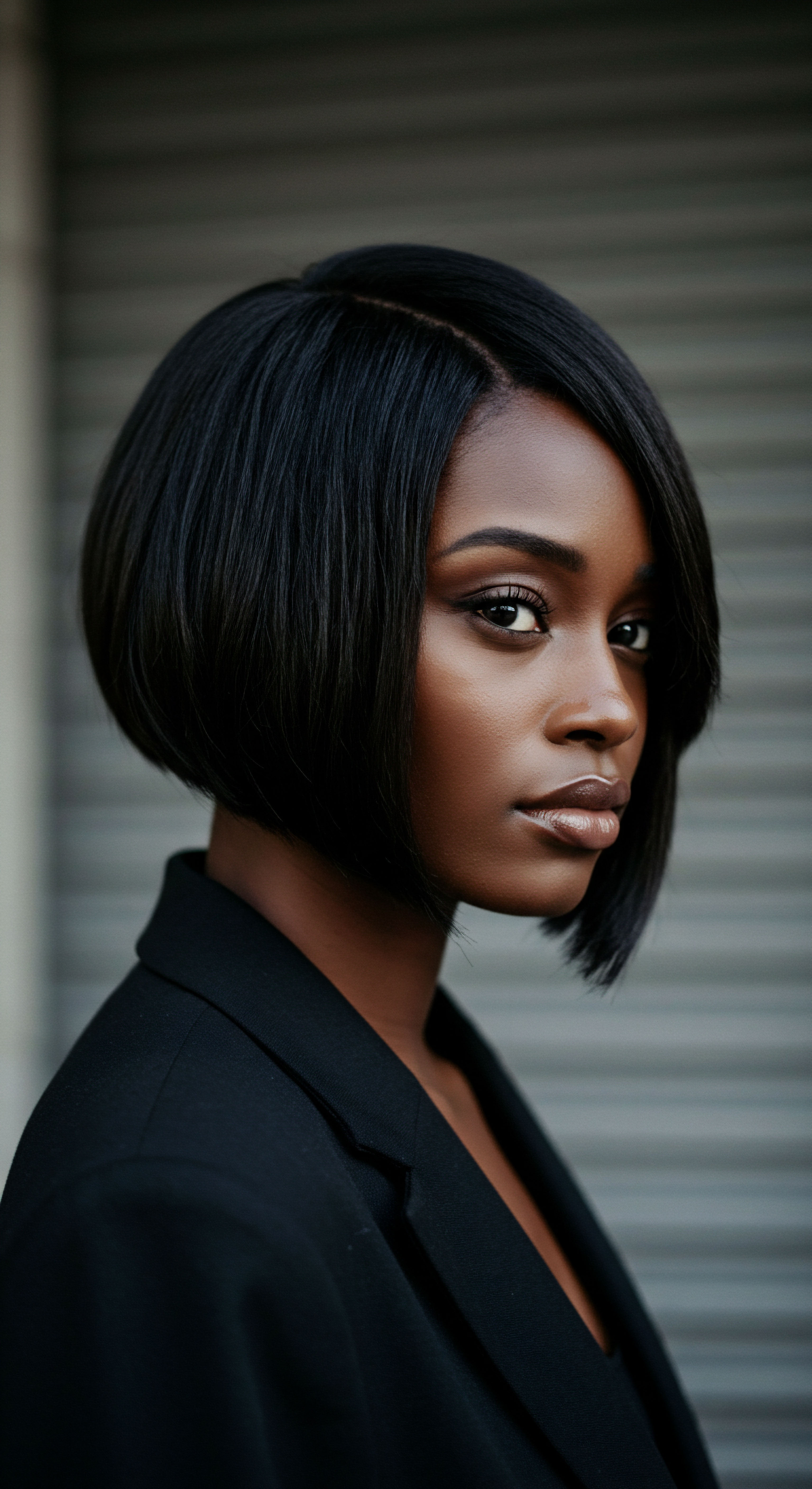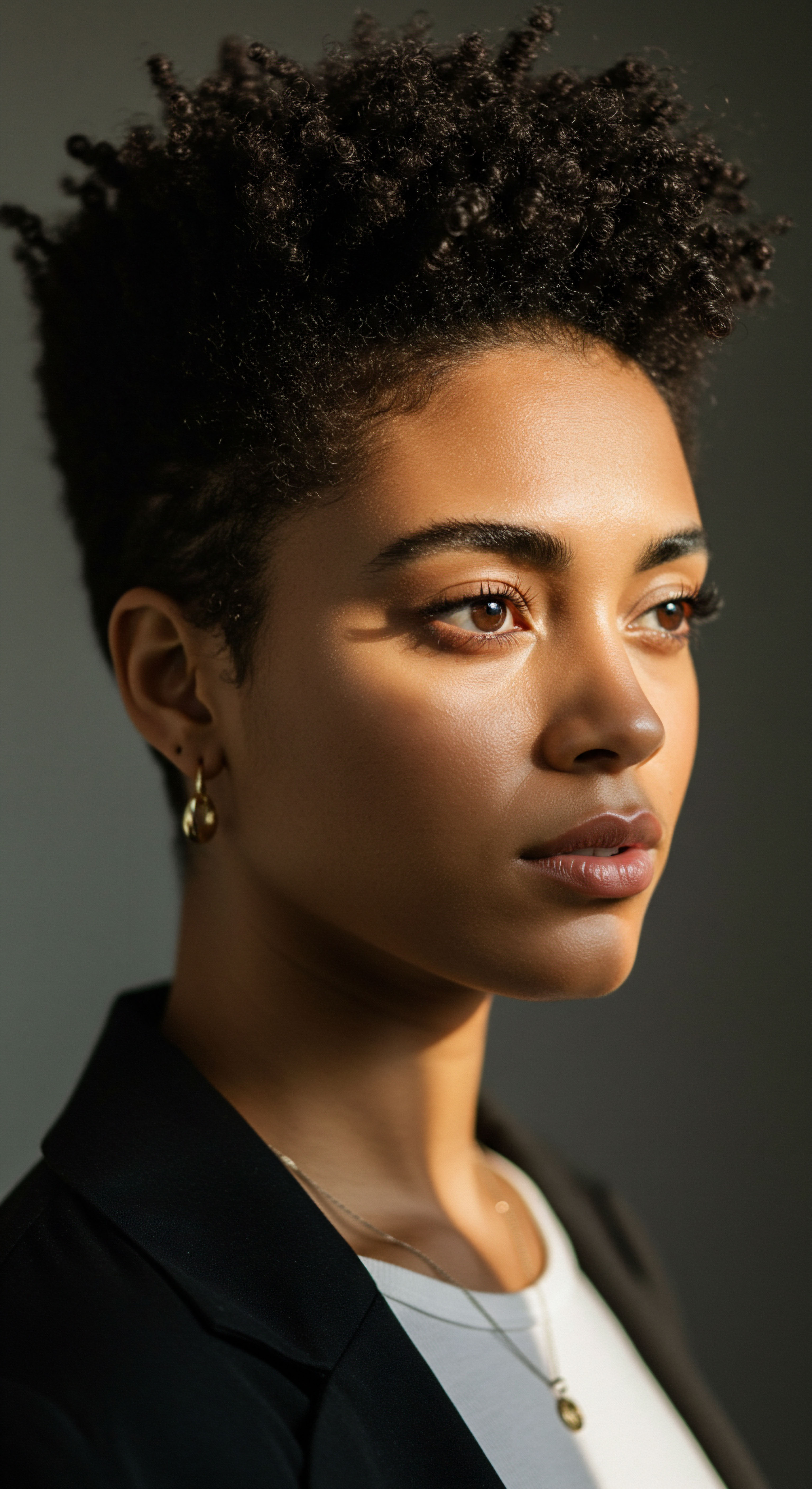
Roots
There exists a quiet language within our hair, a deep whisper from the scalp that speaks of its history, its vulnerabilities, and its boundless strength. For those with textured strands, especially when adorned in braids, this conversation becomes a symphony of heritage and delicate biology. We often admire the artistry of a braided style, its sculptural grace, yet the unseen realm beneath, the scalp, holds the very secret to its longevity and the vitality of the hair it cradles.
Understanding this foundational connection, the intricate dance between scalp and strand, forms the bedrock of true hair well-being. It is a journey into the elemental, where the origins of hair life reveal the pathways to enduring health.

The Scalp’s Silent Declarations
The scalp, frequently overlooked in our adoration of the hair shaft, serves as the fertile ground from which every strand springs. Its complex structure, a network of follicles, blood vessels, and sebaceous glands, orchestrates the entire growth cycle. For textured hair, characterized by its unique elliptical cross-section and often fewer cuticle layers at the curve, the integrity of this foundation becomes even more paramount.
The natural curl pattern, while beautiful, creates points of structural vulnerability along the shaft, making it more susceptible to breakage and dryness. This inherent architecture means the scalp’s health directly dictates the strength and resilience of the hair as it emerges and matures.
When hair is styled into braids, particularly those that pull tautly at the roots, the scalp faces increased mechanical stress. This tension can compromise blood flow to the follicles, which are microscopic organs responsible for hair growth. Each follicle is a tiny factory, nourished by a steady supply of nutrients and oxygen carried through the bloodstream.
Disruptions to this supply, even minor ones sustained over time, can diminish the follicle’s capacity to produce robust, healthy hair. This sustained strain can lead to inflammation around the follicle, a subtle yet persistent assault that, if unaddressed, can weaken the hair root and contribute to thinning.
The scalp, often an unsung hero, provides the essential foundation for vibrant textured hair, especially when styled in braids.

Hair Follicle Resilience Under Strain
The hair follicle, though remarkably adaptable, possesses a threshold for stress. When consistently subjected to excessive tension, a phenomenon known as Traction begins to take its toll. This physical pulling can lead to a condition called traction alopecia, a form of hair loss that results from prolonged or repetitive tension on the hair shaft.
While braids are celebrated protective styles, their protective qualities hinge entirely on the manner of their installation and subsequent care. A braid that is too tight, or one that is left in for an excessive duration without proper maintenance, can inadvertently become a source of damage rather than a shield.
The earliest signs of this strain might be subtle ❉ a slight redness around the base of the braids, small bumps, or a persistent tenderness of the scalp. These are the scalp’s initial cries for relief, signals that the follicles are under duress. Ignoring these early indicators can lead to more significant issues, including follicular miniaturization, where the hair follicle shrinks over time, producing progressively finer and shorter hairs until it ceases production entirely. Understanding the delicate balance of tension and relief is not merely a matter of comfort; it is a critical component of preserving the hair follicle’s long-term health and preventing irreversible thinning.
- Follicle Health ❉ The direct determinant of hair strength and thickness.
- Traction Alopecia ❉ A preventable form of hair loss from sustained pulling.
- Early Indicators ❉ Redness, bumps, or tenderness signal scalp distress.

What Constitutes a Healthy Scalp Environment?
A thriving scalp environment for textured hair in braids is characterized by several key factors. First, it must be clean and free from excessive product buildup, which can clog follicles and create an unwelcome breeding ground for bacteria or fungi. Secondly, it requires adequate moisture. A dry scalp can become itchy and flaky, leading to scratching that further irritates follicles and potentially compromises the skin barrier.
Thirdly, proper circulation is vital. Gentle massage can help stimulate blood flow, delivering essential nutrients to the hair roots.
Finally, a healthy scalp means minimizing inflammation. This can be achieved through appropriate product choices, avoiding harsh chemicals, and protecting the scalp from environmental stressors. When the scalp is calm, clean, and nourished, the hair follicles are best positioned to produce their strongest, most vibrant strands, even when housed within the protective embrace of braids. This foundational understanding sets the stage for the practical care rituals that follow, transforming mere habit into intentional, informed protection.

Ritual
Our hands, guided by intuition and wisdom passed through generations, have always been central to the care of textured hair. When strands are gathered into braids, this connection to deliberate, thoughtful practice becomes even more profound. It is in the rhythmic application of a soothing oil, the gentle cleansing, and the mindful release of tension that we truly shield our hair from the insidious march of thinning. This is not a mere routine; it is a ritual, a sacred pause dedicated to the enduring health of our scalp and the beauty it yields.

Pre-Braiding Preparation Protects Scalp Health?
The longevity and health of braided styles begin long before the first strand is woven. The condition of the hair and scalp prior to braiding sets the stage for success or potential strain. A common oversight involves braiding hair that is either too dry or laden with excessive product. Both scenarios can lead to issues.
Dry hair is more prone to breakage under tension, while product buildup can create an occlusive layer on the scalp, hindering its ability to breathe and receive proper nourishment. A clean, hydrated, and detangled foundation is paramount.
Consider a gentle cleansing shampoo that purifies without stripping, followed by a deeply moisturizing conditioner. Detangling should be performed meticulously, section by section, using a wide-tooth comb or fingers, working from ends to roots. Applying a light leave-in conditioner or a humectant-rich product can further prepare the strands, ensuring they are pliable and resilient enough to withstand the braiding process without undue stress on the follicles. This preparatory phase is a silent promise to the scalp ❉ a pledge of care that mitigates the potential for thinning before it even begins.
| Preparation Step Gentle Cleansing |
| Purpose for Scalp Health Removes buildup, allows scalp to breathe. |
| Preparation Step Deep Conditioning |
| Purpose for Scalp Health Hydrates hair, improves elasticity. |
| Preparation Step Thorough Detangling |
| Purpose for Scalp Health Reduces tension during braiding, prevents breakage. |
| Preparation Step Light Leave-In Application |
| Purpose for Scalp Health Provides sustained moisture and pliability. |
| Preparation Step These steps collectively reduce stress on follicles and promote a healthy braiding experience. |

Maintaining Scalp Serenity During Braided Wear
Once braids are installed, the true ritual of maintenance begins. This phase is less about styling and more about sustained care for the hidden scalp. Regular cleansing, even with braids in, is non-negotiable. Diluted shampoos or specialized scalp cleansers applied directly to the scalp with an applicator bottle can remove dirt and product residue without disturbing the braids excessively.
Following cleansing, the application of lightweight, non-comedogenic oils or serums directly to the scalp is critical. These products provide moisture, soothe irritation, and can deliver vital nutrients to the follicles.
Scalp massage, performed gently with the pads of the fingers, can stimulate blood circulation. This simple act, done for a few minutes daily, can significantly improve the delivery of oxygen and nutrients to the hair follicles, thereby strengthening them and promoting healthier growth. It also helps to distribute natural oils and alleviate any minor tension. Avoiding excessive pulling or re-tightening of braids, especially around the hairline, is also vital.
The hairline, often the most delicate area, is particularly susceptible to traction-induced thinning. These consistent, gentle actions are the bedrock of maintaining a tranquil scalp environment, allowing the hair to thrive within its protective style.
Consistent, gentle scalp care during braided wear, including cleansing and oiling, forms a protective shield against thinning.

The Art of Hydration and Tension Release
Hydration extends beyond just the scalp; the hair strands within the braids also need moisture. While oils seal in moisture, they do not provide it. Water-based sprays, infused with humectants like glycerin or aloe vera, can be misted onto the braids and scalp to keep both hydrated. This practice helps to prevent the hair from becoming brittle and breaking inside the braids, which can also contribute to the appearance of thinning once the style is removed.
Regular, but gentle, tension release is another subtle yet powerful practice. This means not leaving braids in for excessively long periods. While the exact duration varies depending on hair type, braid size, and individual sensitivity, a general guideline suggests not exceeding 6-8 weeks for most styles. Even within this period, taking breaks between braided styles, allowing the scalp to rest and breathe, is immensely beneficial.
These breaks offer an opportunity for deep conditioning treatments, scalp masks, and unhindered access for cleansing and massage, effectively resetting the scalp’s health before the next protective cycle. This mindful approach ensures that the protective style truly serves its purpose, safeguarding the hair’s vitality.
- Hydrating Sprays ❉ Deliver water-based moisture to braids and scalp.
- Lightweight Oils ❉ Seal in moisture and provide nourishment to the scalp.
- Scalp Massage ❉ Enhances circulation and alleviates tension.

Relay
To truly understand the sustained vitality of textured hair in braids, we must transcend surface-level practices and delve into the interconnected web of biological, cultural, and environmental influences. The question of preventing thinning in braided hair invites a sophisticated exploration, moving beyond simple remedies to a deeper comprehension of follicular dynamics and the systemic factors that shape our hair’s journey. This is where scientific insight meets ancestral wisdom, creating a holistic perspective that informs truly protective care.

How Does Follicular Microcirculation Shape Hair Density in Braids?
The health of hair follicles, and by extension, the density of hair, relies heavily on robust microcirculation within the scalp. Each hair follicle is fed by a network of tiny blood vessels, which deliver the oxygen, vitamins, and minerals essential for cellular proliferation and keratin synthesis – the building blocks of hair. When textured hair is pulled into braids, particularly if the tension is significant or prolonged, these delicate microvessels can be compressed, impeding blood flow. This ischemic condition, even if mild, can deprive the follicles of their vital nourishment.
Over time, this deprivation can lead to a phenomenon known as Follicular Miniaturization, where the hair shaft produced by the follicle becomes progressively thinner and shorter, eventually ceasing growth altogether. This process contributes directly to visible thinning, especially along the hairline and nape, areas frequently subjected to the greatest braiding tension.
Research indicates that sustained mechanical stress on the scalp can induce an inflammatory response at the follicular level. This chronic low-grade inflammation further compromises the follicle’s ability to function optimally, accelerating the miniaturization process. A study examining the prevalence of traction alopecia in African American women found that certain braiding practices, such as very tight braids or extensions, were significantly associated with the condition.
One notable study, published in the Journal of the American Academy of Dermatology, observed that tight hairstyles were a leading cause of hair loss among Black women, with Traction Alopecia being the most common form, affecting up to one-third of this demographic. This statistic underscores the critical importance of braiding techniques that prioritize scalp comfort and follicular integrity over extreme tautness for aesthetic longevity.

Beyond Tension What Other Factors Influence Thinning in Braids?
While mechanical tension is a primary culprit, the landscape of hair thinning in braided styles is more complex, encompassing a synergy of other factors. The choice of hair products, for instance, plays a substantial, though often underestimated, role. Products containing heavy silicones, mineral oils, or waxes can create an occlusive layer on the scalp, trapping sweat, dirt, and dead skin cells.
This creates an anaerobic environment that can promote the growth of yeasts or bacteria, leading to conditions like seborrheic dermatitis or folliculitis. These inflammatory scalp conditions can severely compromise follicular health, contributing to thinning that may be exacerbated by the presence of braids.
Moreover, nutritional deficiencies can silently undermine hair health, making strands more susceptible to thinning even under optimal external care. A lack of essential vitamins and minerals, such as iron, zinc, biotin, and Vitamin D, can impair the hair growth cycle. For individuals maintaining braids for extended periods, who might not be able to access their scalp for regular treatments or who might overlook internal nutritional needs, these deficiencies can manifest as generalized thinning. The cumulative effect of external stressors (tension, product choices) and internal imbalances (nutrition, systemic health conditions) creates a complex interplay that demands a holistic approach to scalp care when wearing braids.
| Factor Product Buildup |
| Impact on Scalp/Hair Clogs follicles, promotes microbial growth. |
| Prevention Strategy Use water-soluble products, regular scalp cleansing. |
| Factor Nutritional Deficiencies |
| Impact on Scalp/Hair Impairs hair growth cycle, weakens strands. |
| Prevention Strategy Balanced diet, consider targeted supplements. |
| Factor Underlying Health Conditions |
| Impact on Scalp/Hair Systemic inflammation, hormonal imbalances. |
| Prevention Strategy Consult healthcare professional for diagnosis and management. |
| Factor Environmental Stressors |
| Impact on Scalp/Hair Pollution, UV radiation, extreme temperatures. |
| Prevention Strategy Protective head coverings, antioxidant-rich products. |
| Factor Addressing these factors beyond tension offers a comprehensive approach to preventing thinning. |
Hair thinning in braids is a complex interplay of tension, product choices, and internal well-being, demanding a comprehensive care strategy.

The Cultural and Psychological Resonance of Braided Hair and Thinning
The relationship between textured hair, braids, and thinning extends beyond mere biology into deeply personal and cultural territories. For many, braided styles are not just a fashion choice; they are a powerful expression of identity, heritage, and connection to community. The experience of thinning hair, particularly when associated with a culturally significant style, can carry a significant psychological burden. It can impact self-perception, confidence, and a sense of connection to one’s roots.
This psychological dimension underscores the importance of sensitive and informed care practices. Conversations around braiding techniques, tension, and scalp health should be approached with cultural intelligence, recognizing the historical significance and personal value of these styles.
The practice of braiding, when performed with awareness and respect for the scalp’s delicate nature, can be a profound act of self-care. It becomes a conscious choice to protect, to celebrate, and to honor the hair’s innate strength. The ‘relay’ of knowledge—from scientific discovery to ancestral practice, from professional guidance to personal experience—creates a continuous loop of learning and adaptation. This ongoing dialogue ensures that the protective potential of braids is fully realized, shielding textured hair from thinning while preserving its profound cultural resonance.

Reflection
As we draw our thoughts together, the quiet wisdom of our scalp becomes ever clearer. The path to preserving textured hair in braids, safeguarding it from the shadow of thinning, is not a singular instruction but a symphony of gentle attentiveness. It is in the soft touch of prepared hands, the careful selection of nourishing elements, and the understanding that true protection springs from a deep respect for both biology and heritage. May our practices always be guided by this knowing, allowing each strand to flourish, strong and radiant, a testament to thoughtful care.

References
- McMichael, L. J. (2014). Hair and Scalp Disorders ❉ Medical and Surgical Approaches. CRC Press.
- Callender, V. D. & McMichael, L. J. (2013). Hair and Scalp Diseases ❉ The Complete Guide to Hair Loss and Hair Care. Demos Medical Publishing.
- Ogunleye, T. A. & Callender, V. D. (2018). Hair and Scalp Disorders in Ethnic Minorities ❉ A Clinician’s Guide. Springer.
- Gathers, M. A. & Burgess, C. M. (2017). Black Skin, Second Edition ❉ Diagnosis and Management of Skin Diseases in Black Patients. CRC Press.
- Khumalo, N. P. & Gumedze, F. N. (2010). The prevalence of traction alopecia in African American women ❉ a systematic review. Journal of the American Academy of Dermatology, 63(6), 999-1006.
- Robbins, C. R. (2012). Chemical and Physical Behavior of Human Hair. Springer.
- Dawber, R. P. R. & de Berker, D. (2001). Diseases of the Hair and Scalp. Blackwell Science.